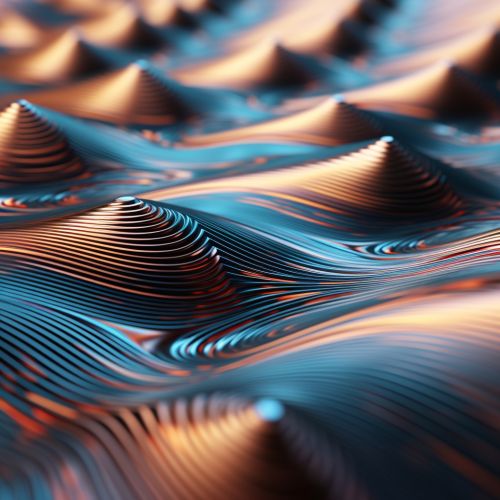Plasmonics
Introduction
Plasmonics is a field of study that focuses on the interaction between electromagnetic field and free electrons in a metal. The free electrons, driven by the electromagnetic field, can collectively oscillate, forming a plasmon. The study of these plasmons, their properties, and their applications is the crux of plasmonics Plasmon.
Theoretical Background
Plasmons are quasiparticles resulting from the quantization of plasma oscillations, similar to phonons and excitons. These oscillations occur when the free electron gas in a metal is perturbed by the electromagnetic field. The restoring force provided by the positive ionic lattice leads to oscillations at a characteristic frequency, known as the plasma frequency Plasma Oscillation.


Surface Plasmons
Surface plasmons are those that occur at the interface between a metal and a dielectric, such as air or glass. They are a type of evanescent wave and decay exponentially away from the interface. The existence of surface plasmons was first proposed by Rufus Ritchie in 1957 Rufus Ritchie.
Plasmonics in Nanotechnology
Plasmonics has found significant applications in the field of nanotechnology. The ability to confine light to dimensions smaller than its wavelength using plasmons has opened up new avenues in nano-optics and nano-photonic devices Nano-optics.
Plasmonic Materials
While plasmons can be excited in any metal, certain materials exhibit more favorable plasmonic properties. Gold and silver are commonly used due to their strong interaction with light and relative chemical stability.
Applications of Plasmonics
Plasmonics has a wide range of applications, from sensing and spectroscopy to telecommunications and energy. In sensing, the sensitivity of plasmons to the local environment is exploited for biosensing and chemical sensing. In telecommunications, plasmonics can be used to overcome the diffraction limit of light, enabling high-speed, miniaturized photonic devices Photonic Device.
Future of Plasmonics
The future of plasmonics lies in the development of new materials and structures that can better control and utilize plasmons. This includes the exploration of alternative plasmonic materials, such as graphene and topological insulators, as well as the design of novel plasmonic structures and devices.
